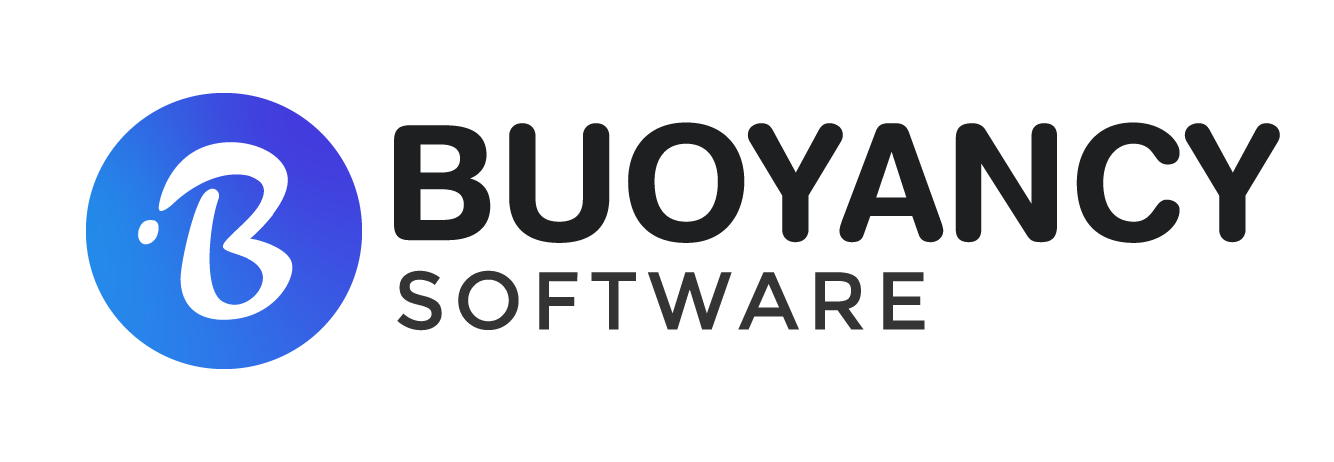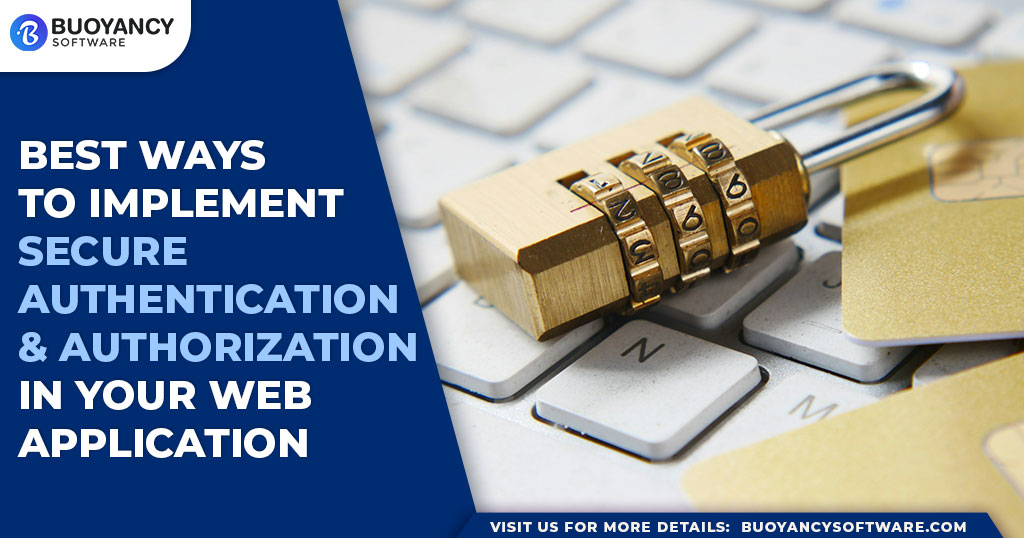Authentication and Authorization serve as the cornerstones of web application security, providing essential layers of protection for user data and system resources.
In this comprehensive blog post, we’ll explore the core principles of authentication and authorization, underscore their importance, and provide expert guidance on their effective implementation in your web application, following industry best practices.
Table of Contents
- Understanding Authentication and Authorization
- Difference between Authentication and Authorization
- Importance of Authentication and Authorization
- Implementing Authentication and Authorization
- Different Ways to Authenticate Web Apps
- Different Ways to Authorize Web Apps
- Choosing the Right Approach
- Beyond the Basics
- Conclusion
Understanding Authentication and Authorization:
Authentication serves as the initial step in verifying the identity of users accessing your web application. It involves validating user credentials, typically through a combination of usernames and passwords. This crucial process ensures that individuals are who they claim to be, safeguarding against unauthorized access attempts by imposters.
Authorization, on the other hand, dictates the level of access granted to authenticated users within the application. By delineating specific permissions or roles, authorization controls what actions users can perform and which resources they can access. This granular approach ensures that users only interact with functionalities and data pertinent to their designated roles or permissions.
Then What is the difference between Authentication and Authorization?
Ever wondered how websites know who you are and what you can do? Look no further than the dynamic duo of authentication and authorization. While their names might sound similar, they play distinct roles in securing your web experience.
- Authentication: The Gatekeeper
Imagine trying to enter a club. First, you’d show your ID to the bouncer (authentication), proving you’re who you say you are. And similarly when you log in to a website, authentication verifies your identity through passwords, codes, or other methods. It’s the first hurdle you jump to enter the digital space.
- Authorization: The VIP Pass
Once inside the club, you might not have access to everything. Some areas require a VIP pass (authorization). In the digital world, authorization determines what actions you can take and what information you can access. It’s like having different levels of clearance within a website, based on your role or permissions.
- Key Differences:
Focus: Authentication asks “who are you?”, while authorization asks “what can you do?”.
- Timing: Authentication happens at the start, authorization can be ongoing.
- Importance: Both are crucial for secure web applications.
- Why Your Web Development Agency Needs to Know:
Understanding these concepts is vital for building secure and user-friendly applications. Your agency can ensure:
- Strong authentication: Preventing unauthorized access through robust methods.
- Granular authorization: Defining clear permissions for different user roles.
- Usability balance: Making security seamless and unobtrusive for users.
By mastering authentication and authorization, your agency can create secure, trusted web experiences that keep your users’ data safe and empower them with the right access. Remember, you should always employ best practices in both areas to stay ahead of security threats and provide peace of mind for your users and yourself.
The Importance of Authentication and Authorization:
Authentication and authorization play pivotal roles in web application development for several compelling reasons:
- Protection of User Data: By enforcing robust authentication and authorization mechanisms, web applications shield sensitive user data from unauthorized access, manipulation, or theft. This ensures that confidential information remains safeguarded against potential threats posed by malicious entities.
- Compliance with Regulations: Various industries and jurisdictions mandate stringent security measures, including robust authentication and authorization protocols, to uphold data privacy and protection standards. Adhering to these regulations is imperative for businesses to mitigate legal risks, avoid penalties, and uphold their reputation.
- Improved user experience: By granting appropriate access levels, you provide a tailored experience for each user, enhancing their satisfaction and engagement.
- Prevention of Cyberattacks: Web applications are prime targets for malicious cyberattacks, ranging from hacking attempts to phishing schemes and malware infiltration. Authentication and authorization serve as vital deterrents against such threats, thwarting unauthorized access attempts and fortifying the application’s defenses against potential breaches.
Implementing Authentication and Authorization:
- Employ Secure Authentication Methods: Utilize strong authentication mechanisms, such as multi-factor authentication (MFA) or biometric authentication, to enhance user verification and bolster security against unauthorized access.
- Implement Role-Based Access Control (RBAC): Leverage RBAC principles to streamline authorization management, assigning specific roles to users based on their responsibilities or privileges within the application. This ensures granular access control and minimizes the risk of unauthorized actions.
- Enforce Data Encryption: Implement robust encryption protocols, such as HTTPS, to encrypt sensitive data transmitted between the client and server, safeguarding against eavesdropping and interception attacks.
Let us Dive in Detail About Authentication: Different Ways to Authenticate Web Apps.
Navigating the world of web authentication can feel like cracking a complex code. But fear not, for this guide will break down the most common methods and empower you to choose the right one for your needs.
Remember the Cookie Jar:
- Cookies: The classic method, where a server stores a session ID in your browser, like a personalized cookie. Simple and familiar, but vulnerable to theft and limited for complex applications.
Beyond the Jar: Token Time:
- Tokens: Think of them as secure, encrypted keys. Stored securely on your device, they offer better security and scalability, making them ideal for modern applications.
Sharing is Caring: Third-Party Access:
- OAuth, API Tokens: Imagine using one key to unlock multiple doors. These methods rely on trusted external services to handle authentication, simplifying logins and enhancing convenience.
One Ring to Rule Them All: OpenID:
- OpenID: Like using a single ring to access different realms, this standard lets you use one login across multiple websites, promoting ease and security.
Join the Federation: SAML:
- SAML: Picture multiple kingdoms trusting a central authority for identification. SAML fosters single sign-on (SSO), allowing seamless access to various applications with one login.
Choosing Your Champion:
Each method has its strengths and weaknesses:
- Cookies: Simple, but less secure.
- Tokens: Secure and scalable, but require careful implementation.
- Third-Party Access: Convenient, but introduces external dependencies.
- OpenID: User-friendly, but limited to participating websites.
- SAML: Secure and robust, but requires complex setup.
The Key Takeaway:
Understanding these methods empowers you to make informed decisions. Consider your security needs, user experience, and integration requirements to choose the champion that best suits your web application’s unique needs.
Remember, authentication is more than just a gatekeeper – it’s the foundation of a secure and seamless user experience. Choose wisely and b
Now Let us Dive deep into the Best Practices Related to Authorization For Web Apps:
In today’s interconnected world, web applications store and manage valuable data, making robust authorization mechanisms crucial for safeguarding sensitive information and ensuring user privacy.
Choosing the right approach requires understanding how different methods define what actions users can perform and what resources they can access.
Let’s explore some key authorization methods:
1. Role-Based Access Control (RBAC):
- Simple and familiar: Define roles with associated permissions and assign users to relevant roles. This simplifies management for common user groups with similar needs.
- Scalability limitations: Assigning individual permissions to specific roles can become complex for large user bases or granular controls.
2. Attribute-Based Access Control (ABAC):
- Fine-grained control: Evaluate various attributes (user roles, resource characteristics, environmental conditions) to make dynamic access decisions. This allows for highly customizable policies based on diverse factors.
- Increased complexity: Managing and monitoring numerous attributes can be challenging, requiring careful implementation and ongoing review.
3. Rule-Based Access Control (RBAC):
- Conditional flexibility: Define access rules based on specific criteria, enabling adaptive policies that respond to changing contexts. This provides more control than static role-based approaches.
- Rule management complexity: Defining and maintaining a large number of rules can be burdensome, requiring careful design and testing to avoid conflicts.
4. Mandatory Access Control (MAC):
- High-security environments: Strictly enforce pre-defined security labels assigned to users and resources, offering strong controls in critical systems.
- Limited user flexibility: Users cannot modify access permissions, potentially restricting adaptability in less stringent scenarios.
5. Discretionary Access Control (DAC):
- Decentralized management: Users control access to their own resources, granting or revoking permissions as needed. This can be convenient for collaboration-focused applications.
- Potential security risks: Requires vigilant user management, as inappropriate permission sharing can expose vulnerabilities.
6. Policy-Based Access Control (PBAC):
- Centralized policies: Define and manage access control policies from a central location, ensuring consistency and manageability across large systems.
- Policy complexity: Developing and maintaining comprehensive policies can be challenging, requiring careful attention to detail and potential edge cases.
Choosing the Right Approach:
The optimal method depends on several factors:
- Security requirements: How sensitive is the data, and what level of protection is necessary?
- Scalability and complexity: How many users and resources will the application manage, and how intricate are the access control needs?
- User experience: Should users have flexibility in managing their access, or is centralized control preferred?
Beyond the Basics:
Remember that combining methods can be fruitful. Hybrid approaches often leverage complementary strengths to achieve desired security and user experience goals. Additionally, consider continuous assessment and improvement of your authorization strategies to adapt to evolving needs and threats.
By understanding the nuances of these methods and carefully selecting the appropriate one(s), you can build secure and reliable web applications that effectively protect data and empower users.
Conclusion:
By prioritizing authentication and authorization in your web application development process, you can fortify your system’s security posture, safeguard sensitive data, and uphold compliance with regulatory standards. When cyber threats are constantly evolving, Implementing robust authentication and authorization mechanisms is not just a security best practice; it’s a necessity for any web application seeking to succeed.
By understanding their individual roles and combined power, you can build a secure and trustworthy foundation for your application, fostering user confidence and enabling sustainable growth. Remember, neglecting these vital components is like leaving your digital gates wide open – a risk no responsible builder can afford to take. Adopt these important security practices to reduce risks, increase user confidence, and make your web application resilient to emerging cyber threats.



